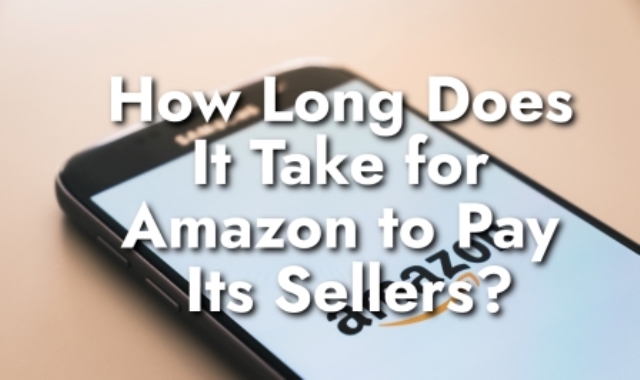Amazon’s seller payment process is designed to ensure that customers are satisfied before releasing funds to sellers. Typically, professional sellers are paid weekly, following a holding period that allows Amazon to handle any customer disputes or returns. Once Amazon decides to release the funds, it can take up to five business days for the marketplace payments to be available in the seller’s bank account.
Frequency of Amazon Seller Payouts
Amazon sellers typically navigate cash flow issues that arise from the payout schedule, which traditionally operates on a bi-weekly basis. However, customer service and business growth are paramount, and Amazon offers options like daily payouts from Amazon for those who need quicker access to their hard-earned money. This flexibility helps maintain a steady cash flow, which is crucial for the ongoing operations of a business.
How Account Performance Can Affect Payment Schedule
Amazon’s payment schedule is closely tied to a seller’s account performance. High performance can lead to more favorable terms, while issues such as customer complaints or order cancellations can delay payments. It’s in every seller’s best interest to maintain a healthy account performance to ensure a consistent payment schedule from Amazon.
Being proactive in managing account health is essential as Amazon pay sellers with the expectation of excellent service to their customers. Regular monitoring and improvement of performance metrics are key to maintaining reliability in Amazon’s payment schedule.
Reserve Tiers and Their Impact on Payment Disbursements
Amazon’s reserve tiers play a significant role in how and when payments are disbursed to sellers. These tiers are based on various factors, including the seller’s historical performance, which influences the amount and timing of the reserve Amazon sets aside. This mechanism protects against potential disputes or claims, ensuring there is always sufficient money to cover liabilities before the rest is paid out to sellers.
Measures to Ensure Timely Amazon Payments
Ensuring timely payments from Amazon means keeping a positive balance in your seller account and meeting all of Amazon’s criteria. If you’re looking to expand your business and need guidance on increasing sales, you might find value in learning about 10 proven strategies to boost your Amazon sales within 30 days. Implementing such strategies could close any cash flow gap and help accumulate points or cash back if using a business credit card.
Understanding and utilizing the available tools and resources can help in bridging the interval between payout dates. Sellers should always aim to keep their account in good standing to avoid any disruptions in the payment cycle.
Reasons Why Your Amazon Payment Might Be Delayed
There are several reasons why payments to sellers may be delayed. These include unresolved A-to-Z Guarantee Claims, chargebacks, and other discrepancies in the seller’s account. To access and receive daily payouts, Amazon sellers can click on the request transfer button, but this is subject to specific eligibility criteria. Additionally, the type of business credit card and bank account can affect the speed at which money hits your account.
Delays can also occur if a seller’s balance is not positive or if there are issues with the payment methods, such as ACH or electronic funds transfers. It’s essential for sellers to monitor their account activity regularly to stay ahead of any potential payment delays.
What to do if You Haven’t Been Paid by Amazon
If you find yourself in a situation where Amazon doesn’t pay as expected, it is essential to first review your account for any reserve period, missing or incorrect information, or usage of amazon-prohibited online payment systems. Selling on Amazon for 10 years or more may qualify you for expedited payment options, but this is contingent on meeting specific performance criteria.
In cases where payments are delayed, contacting Amazon’s support team is the next step. Ensure that all necessary documentation is in order, and be prepared to address any issues they highlight. Receiving payments from Amazon requires adherence to their policies and maintaining a healthy seller account.
Building Financial Resilience with a Seller Cash Reserve
Building a cash reserve is a crucial step towards ensuring financial resilience for Amazon sellers. The money Amazon sets aside for you can help to cover unexpected expenses or payment delays. For inspiration on how to effectively manage and supplement your income, you might be interested in reading about a student who made €1800 doing Amazon part-time while working a full-time job, showcasing the power of having a good strategy and cash reserve.
Sellers should always have a plan for their cash flow, anticipating potential delays and setting aside a percentage of your revenue to mitigate any financial strain that may arise from selling on Amazon.
Frequently Asked Questions
- How often does Amazon pay its sellers?
Amazon typically pays its sellers on a bi-weekly basis. However, the exact frequency can vary depending on the seller’s account settings and performance.
- Can account performance affect how quickly I get paid?
Yes, account performance can affect the payment schedule. Amazon rewards sellers with good performance by potentially offering more favorable payment terms.
- What are reserve tiers?
Reserve tiers are levels set by Amazon to hold a portion of your payments to cover potential disputes or claims. The tier you’re in can affect the timing and amount of your payment disbursements.
- What can I do if my payment from Amazon is delayed?
If your payment is delayed, review your account for any issues, ensure all information is correct, and contact Amazon support for assistance.
- Why is it important to have a seller’s cash reserve?
A cash reserve is important to cover unexpected expenses, payment delays, and to ensure you have funds available to maintain and grow your business during times of lower cash flow.
Conclusion
Understanding Amazon’s payout process and schedule is vital for sellers to effectively manage their cash flow and expand their business. By staying informed and prepared, sellers can navigate the intricacies of Amazon FBA, explore other sales channels, and diversify their income streams to build a resilient and successful online business.
